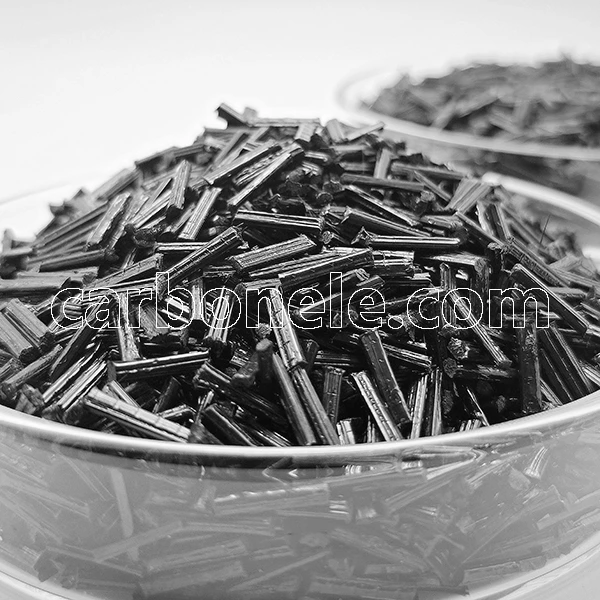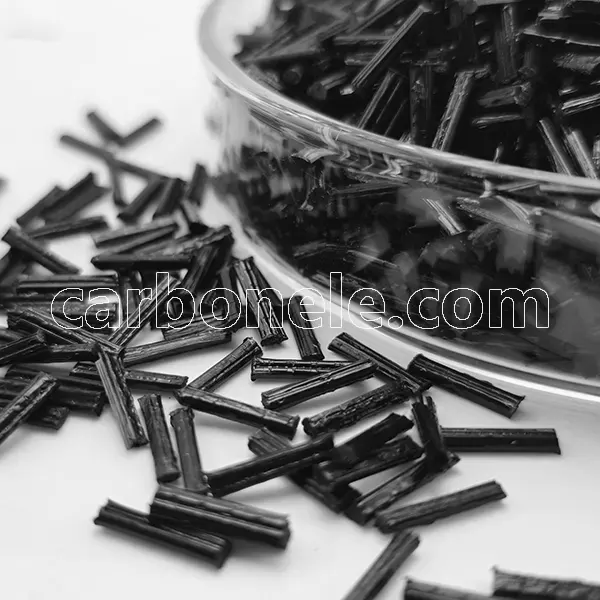CFRTPs: A Bright Chapter For Advanced Materials Applications - Carbon Fiber Compounds Manufacturer | Supplier
What’re CFRTPs?
CFRTPs, namely Carbon Fiber Reinforced Thermoplastic Composites such as nylon PA6 CF10, PA66 CF30, ABS CF20 and PP LCF30, are high-performance composite materials consisting of carbon fibers and thermoplastic resin matrix. Carbon fibers possess excellent properties like high strength, high rigidity, and low density. Thermoplastic resins, in turn, have characteristics such as repeatable processing and good toughness. The combination of these two elements endows CFRTPs with the following remarkable advantages:
I. Outstanding mechanical properties
1. High strength and high rigidity: It can bear large loads and can be used to replace traditional metal materials in fields such as aerospace and automobiles, reducing the weight of the structure while ensuring its strength and stability.
2. Good impact resistance: It can absorb energy when impacted, reducing structural damage. It is suitable for application scenarios with high safety requirements, such as sporting goods and protective equipment.
II. Excellent processability
1. Multiple processing methods can be employed, such as injection molding, compression molding, and hot pressing molding, which can meet the manufacturing needs of products with different shapes and sizes.
2. Repeatable processing: Unlike thermosetting composites, CFRTPs can soften and be reshaped after heating, which is beneficial for the recycling and reuse of products, reducing costs and environmental impacts.
III. Other characteristics
1. Corrosion resistance: It has good resistance to chemical corrosion and is suitable for products used in harsh environments.
2. High design freedom: Customized design can be carried out according to specific application needs to achieve complex shapes and structures, providing a broad space for product innovation.
The Art of Selecting Ideal CFRTPs for Diverse Applications
In the vast field of advanced materials, carbon fiber reinforced thermoplastic composites have risen like a shining star, attracting the attention of many industries like a magnet with their extraordinary performance. However, selecting the perfect CFRTP for a specific application is not an easy task, just like navigating a complex maze, which requires us to make careful considerations and make wise and prudent decisions.
First, it is important to deeply explore the performance requirements of the intended application. Strength, stiffness, impact resistance and fatigue resistance are the key pillars for judging the suitability of CFRTP. Different application scenarios have their own unique priorities. In the lofty field of aerospace, every ounce of weight is important, and durability is considered to be the top priority. CFRTP with high specific strength and excellent fatigue resistance naturally occupies a central position. 
The operating environment is another key factor that cannot be ignored. carbon fiber reinforced thermoplastic composites must be able to withstand changes in temperature, humidity, chemical exposure, and other challenging conditions. For applications in high-temperature environments, CFRTP with excellent heat resistance is essential. Similarly, if exposure to corrosive chemicals is a concern, materials with good chemical resistance are the best choice.
The manufacturing process also has a significant impact on the choice of CFRTP. Various manufacturing methods, such as injection molding, compression molding, and filament winding, place specific performance requirements on composite materials. Injection molding requires good material flow, while compression molding may require a higher viscosity.
In the dynamic field of automotive engineering, CFRTPs has successfully found a fertile application field. The BMW i3 electric car fully demonstrates the strong power of PP CF20%, a reinforced polypropylene (PP) composite material containing 20% carbon fiber, in the manufacture of body parts. Polypropylene is a common but versatile thermoplastic with good impact resistance and significant cost-effectiveness. It is combined with carbon fiber to create a material that is both light and strong. This not only greatly improves the energy efficiency of the vehicle, but also extends its driving range, making this electric car a leader in the market. Tesla Model S also uses carbon fiber reinforced nylon CFRTP in key components such as the battery pack housing. With its admirable mechanical properties and chemical resistance, nylon provides a solid protection for the battery pack from external shocks and vibrations, while ensuring its safe and stable performance.
Cost is always a factor that needs to be taken into consideration. Compared to other materials, carbon fiber reinforced thermoplastic composites can be relatively expensive. However, the long-term benefits they offer, such as reduced weight, improved performance, and reduced maintenance costs, often offset the initial investment. The total lifecycle cost of the product must be considered when evaluating the cost-effectiveness of carbon fiber reinforced thermoplastic composites.
In the sports equipment sector, high-end bicycle manufacturers often use reinforced polyphenylene sulfide (PPS) containing 30% long carbon fibers to make bicycle frames. PPS has excellent adhesion to carbon fibers, giving the frames high strength and stiffness. 
Selecting the right CFRTPs for a specific application is a multifaceted and complex process that requires a comprehensive understanding of factors such as performance requirements, operating environment, manufacturing process, cost, and supplier support. Only by carefully considering these factors and making informed decisions can we fully realize the great potential of CFRTP and ensure a successful project. As we continue to explore the frontiers of materials science, CFRTPs will surely play an even more important role in shaping the future of various industries.
Learn more information about carbon fiber reinforced thermoplastics by videos, please click here.
Previous News
carbon fibre composites: key materials for low-...Next News
Preparation and electrothermal properties of TP...
Feature Product
-
PA12 LCF30 for Drone Fuselages & Wings
What do you know about PA12 LCF30? PA12 ...
-
Competitive Price PA6 LCF30 Composites
What’s it? PA6 LCF30, which stands...
-
ABS CF10 Compound ABS 10%CF Thermoplastic Compo...
What’s ABS CF10? ABS CF10 refers t...









